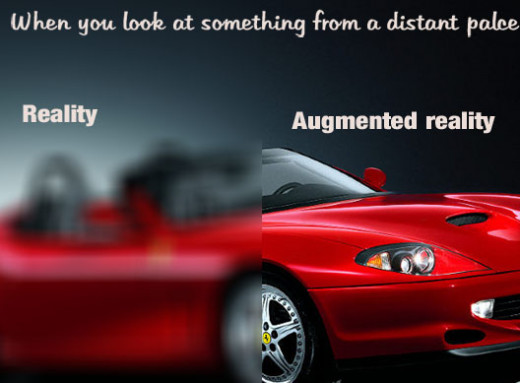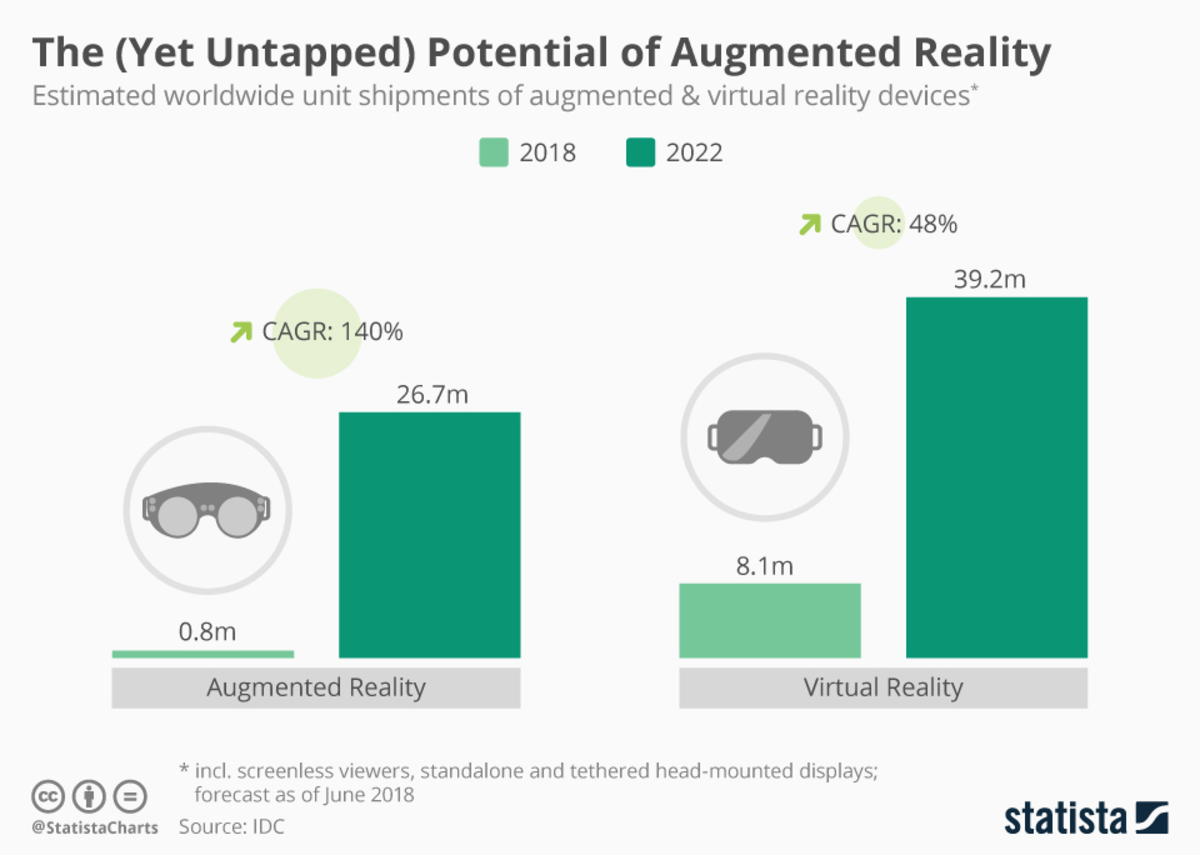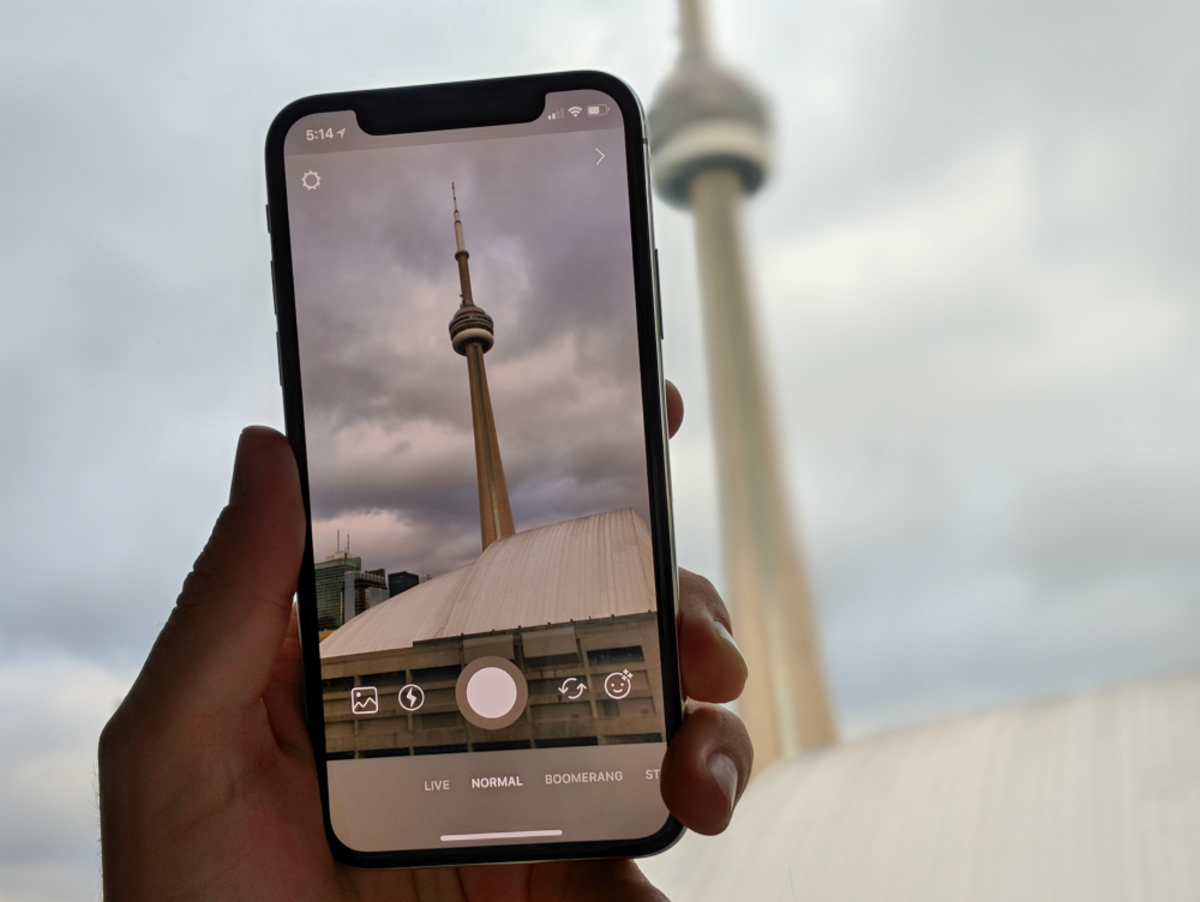Augmented Reality Explained with Examples
What is augmented reality?
Augmented reality means enhancing the experience of your reality. Therefore, by definition, any device or process that enriches our reality can be called augmented reality. An augmented reality system collect information from our surrounding environment in real-time, and superimpose that data in real-time pictures or background information. A simple example of augmented reality is contact lenses. People use contact lenses to correct eye defects such as myopia or astigmatism. In fact, a pair of lens helps a user to augment his vision.
Difference between virtual reality and augmented reality technology
There is no similarity between augmented reality and virtual reality. Both have different purpose. A virtual reality helps a user to see things that are not real or in two dimensions, by making a 2-D view into 3-D view. On the other hand, an augmented reality technology makes a 3-D view more real and clear.

Why do we need augmented reality?
The speed of communication between our eyes and brain is faster than the way we communicate with our friends via mobile devices. Normally, what we see with our eyes cannot be interpreted entirely by our brain- only a percent of captured information is understandable and usable for the creation of reality inside our brain; the rest of the unusable information is simply filtered out as disposal. Therefore, we can say that our eyes can see more than we know about our world. For some mysterious reason, our brains do not process all the information that it receives. Perhaps, brains want us to see only the way our mind wants to see the world. If you think deeper about our brains’ bizarre behavior about processing only a limited amount of information, you will realize that our brain creates the most beautiful picture by filtering out some information is a result of evolution process. Our eyes are just a biological version of digital camera. If our brain could interpret all the observed data captured by eyes, then perhaps we would see a more colorful view of our world.
Nature has built our eyes giving all the power to process and distinguish millions of colors or lights (which is just a spectrum of color or frequency). To help our brain to interpret more colors, we can use augmented reality technology, which is a brand new science with the potential of opening up a completely new world in front of us-which nature was hiding from us for some reason.
University of Washington, USA, undertaking a project of augmented reality, where researchers are trying to build a prototype of augmented-reality project. In this project, scientists are developing an infinitesimally small LED, which will generate energy for a specially designed contact lens. Hundreds of such types of LED (light emitting diode) will be integrated inside contact lenses. In return, this lenses will enhance our ability to interpret more colors of the world than our brain usually do, helping us to experience new version of the known world.
Future of augmented reality
Wearable Retinal Display-Augmented Reality Glasses
This is another form of augmented reality. It will work as a universal language translator. In this technology, a small device will be integrated in a pair of optical lenses wearable just like glasses, which will be a display screen for showing the translated language and a piece of microphone will be attached with the frame as a receiver intended to capture any foreign language spoken with you. Any word you hear in any language will be transmitted in real-time to a central server for translation and the output of the translation will be shown in front of your glasses-that is what the purpose of wearable retinal display. Eventually, this will help us break the language barrier-a great enterprise towards cultural globalization.
Heads-Up Display
This is one of the most popular augmented-reality systems getting popularity to young people. You must have seen this type of prototype in many movies, especially in science-fiction movies. What heads-up display does is it can show you any real-time computer generated data or statistics in a windshield of a car or aircraft. This is been widely used in military information processing and data analysis presentation purpose.
A well-known example of augmented reality is Google glasses, which can pictures, translate language or can show a driving direction in front of your eyes. Anything that helps you experience your reality better is part of augmented reality.








